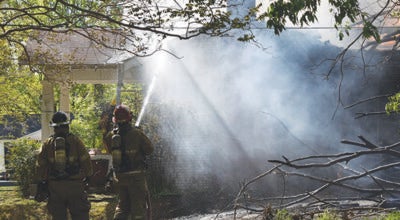Bravery followed by fear at second attack during Siege of Vicksburg
Published 12:40 am Saturday, May 23, 2015
What happened on Graveyard Road that day showed the best and worst of humanity.
On May 22, 1863, Union forces had surrounded Vicksburg and launched artillery into the city’s defenses for four hours. At 10 a.m., the guns fell silent, and the Union infantry was thrown forward along a 3-mile front.
On Graveyard Road though, 150 men known as the Forlorn Hope volunteered for an attack on Stockadge Redan, one of the major Confederate forts. Half of them were killed in action.
Many of the men who were supposed to follow them into battle, fell down and played to avoid a similar fate, Vicksburg National Military Park ranger Ray Hamel said during a program commemorating the 152nd anniversary of the second major attack on the city.
“This is blood-soaked ground here at Graveyard Road,” Hamel said. “This is hallowed ground. This is where Americans made the ultimate sacrifice. That’s why we’re here at Vicksburg National Military Park.”
The failure of the troops to move clogged up the roadway, ending any hope of a successful attack.
Members of the Forlorn Hope who made it to the redan were unable to scale its walls, and instead were pinned down for hours, waiting for nightfall to make a retreat.
“The Confederates are rolling down 12-pound howitzer rounds into the ditch. They are fused and timed — giant grenades if you will,” Hamel said.
Of course, heavy fighting was waged all along the front. Troops under Maj. Gen. James B. McPherson attacked along Jackson Road and those under John McClernand attacked on Baldwin Ferry, making the only real land grab of the day before being repelled, Hamel said.
“It’s really a hodgepodge slugfest of Union forces looking for breaches,” Hamel said.
Although flags of all three corps were planted at different points along the exterior slopes of the Confederate fortifications, and McClernand’s troops were able to make a short-lived penetration at Railroad Redoubt, the Federals were again driven back by a Confederate force armed with superior rifles and taking advantage of the battlefield’s fortifications and natural terrain.
As a result, Union Gen. Ulysses S. Grant famously said he would instead out camp the enemy rather than take the city by force, and the historic 47-day-siege officially began.





